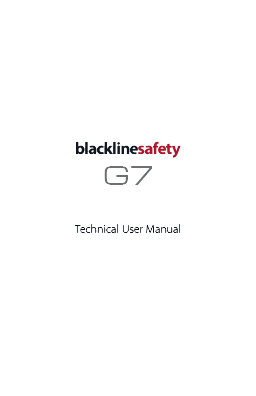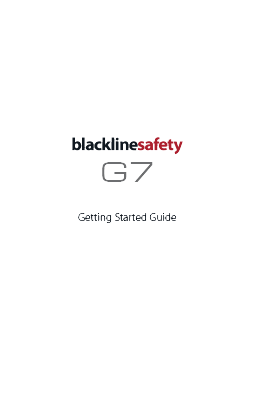G7c has a battery life of 18 hours continuous operation at 20°C (68°F).
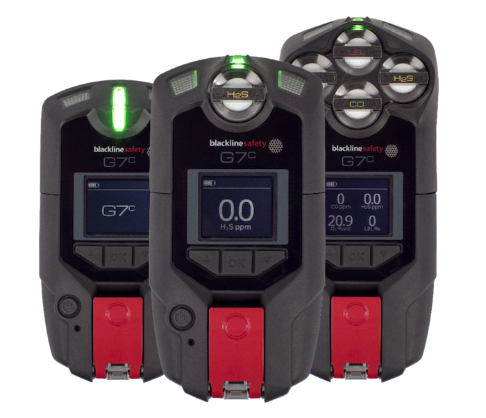
Blackline Safety's G7c leverages integrated 4G-cellular connectivity to wirelessly link your team to real people, while automating data analytics and compliance reporting.
Should a gas leak, injury or health event occur, G7c confidently accounts for everyone’s well-being and whereabouts in real-time, so no call for help ever goes unanswered.
The moment something happens, safety incident data is communicated to live monitoring personnel who can mobilize responders to an employee’s exact location or trigger an evacuation in real-time. With a two-way speakerphone, monitoring personnel can communicate directly with the worker to provide comfort while also gathering critical insights and situational awareness for optimized emergency responses.
G7c delivers an exclusive customizable modular design, delivering the ability to expand functionality with a range of plug-and-play cartridges and a range of gas sensors. Choose from a Standard, Single-gas, Multi-gas diffusion or Multi-gas pump cartridge to address the needs of your work environment — everything is completely configurable to meet the needs of every industry, application and scenario.
If you are using G7c for gas detection, you can review your device’s bump test and calibration certificates here.
G7c has a battery life of 18 hours continuous operation at 20°C (68°F).
Calibrations take about four minutes, while bump tests take around 30 seconds. The exact time may differ depending on the gas being used.
G7 can receive calls from monitoring personnel, but cannot make them. If you need to request help, please pull the red latch.
Standard cartridges do not support gas detection, single-gas cartridges support the detection of your choice of one gas and quad-gas cartridges support the detection of your choice of four gases.
Yellow pending and warning alarms are between you and G7, and are not communicated to monitoring personnel. Yellow pending alarms can escalate into red alerts if they are not cancelled within the configured time period, whereas warning alarms will never escalate. Red alerts are immediately communicated to the Blackline Live portal and monitoring personnel, and can only be silenced– not cancelled.
G7’s cartridge can be changed by removing the two screws on either side of the cartridge and pulling upward. To add a new cartridge, slide the cartridge onto G7 and replace the screws. If you wish to order new gas cartridges, please contact Blackline’s Customer Care team.
Look at G7’s screen to ensure that you are performing the correct action. If you are pressing on the up and down arrows, ensure that you are applying constant pressure.
If you are not sure why G7 is making noise, the LCD screen will inform you of the reason and provide further instructions.
Blackline provides a more advanced method of latching than traditional gas detectors. The device itself does not “latch” – it shows the current status of the gas reading so that the user has the best and most accurate information available to them.
However, high gas alerts are latched in our portal. These alerts are persistent even when the gas clears. Monitoring personnel will follow the company’s custom protocol before resolving the alert.
For users that prefer alerts to latch on the device itself, we allow a latching feature to be enabled for LEL high gas alerts. To learn more about this feature, see this support article.
Yes, the G7 supports bumping and calibrating with your breath. Here’s an explanation of how it works:
During an instrument calibration, the output of each gas sensor must be measured at two points. Those two points are called “zero point” and “span point”. Zero point represents the output of the sensor in the absence of gas and span point represents the output of the sensor at a higher, known concentration of gas.
The ambient environment does not contain the target gas for most gas sensors so ambient air can used to measure the zero point during calibration. Then a known concentration of the target gas is applied to the sensor to measure the span point. After these two points have been measured and confirmed to be within the acceptable limits, the calibration can be applied to the instrument.
Oxygen sensors are an exception to what is described above. The ambient air contains 20.9% of the target gas, oxygen, so it cannot be used to measure the zero point . For oxygen sensors the zero point is assumed to be when the sensor has zero output. Ambient air is used to measure the span point at 20.9%. Using those two points the calibration is calculated but it is not immediately applied to the instrument. The sensor has not yet been tested to ensure that it responds when the concentration of oxygen changes. To confirm the operation of the sensor a gas that has a concentration of lower than 19.5% must be applied. If the sensor responds appropriately to the drop in oxygen then the previously calculated calibration is applied to the instrument.
Bottled calibration gas for oxygen sensors will typically contain 18% oxygen. This gas is used during the calibration process to test the that the oxygen sensor responds appropriately but is not actually used in the determination of a zero or span point. Because exhaled breath only contains about 15% oxygen, an oxygen calibration can be completed by breathing on the sensor.
Chlorine (Cl2) is unique in that it is a sticky gas — it adheres to surfaces it has contact with, causing it to release slower than other gases.
If you are using chlorine with G7 Dock, you must use the following:
For more information on bump testing and calibrating with reactive gases, see Bump Testing and Calibrating CL2 or CL2 and SO2 Sensors and G7 Gas Sensor Bump Testing and Calibration Order.
When operating the multi-gas pump cartridge it is best practise to shield the sensors from a windy environment to ensure the most accurate gas measurements. When conditions make it difficult to protect the G7’s sensors from the wind, the multi-gas calibration cap can be used as a shield.
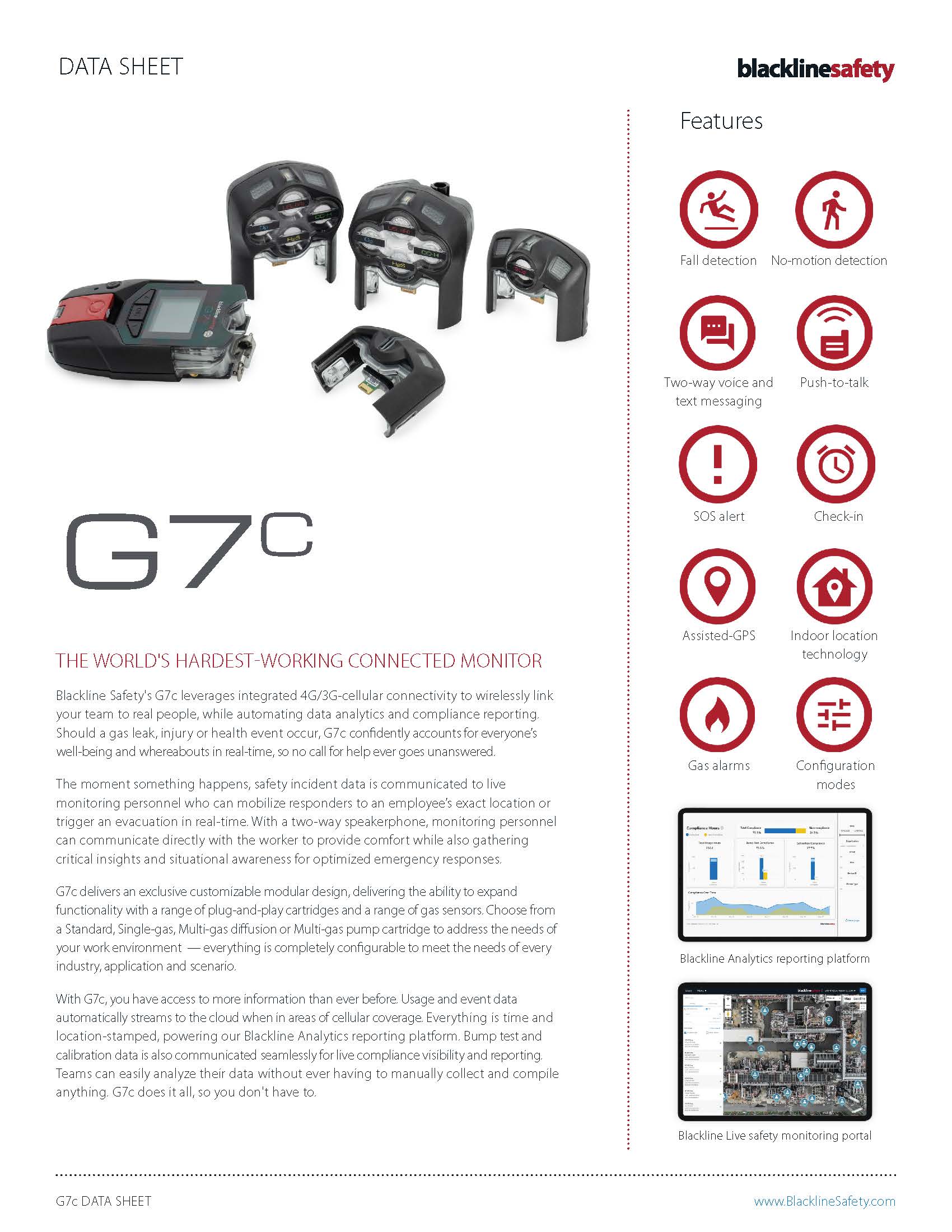

| G7c Datasheet - EN | |
| G7c Datasheet - FR | |
| G7c Datasheet - ES | |
| G7c Datasheet - DE | |
| G7c Datasheet - IT | |
| G7c Datasheet - NL | |
| G7c Datasheet - PT |
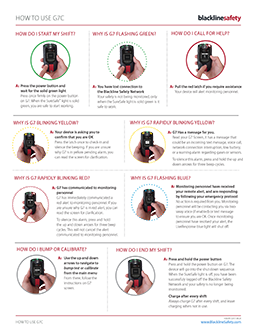

| G7c Quick Reference Sheet | |
| G7 Quick Reference R1 - FR | |
| G7 Quick Reference R1 - ES | |
| G7 Quick Reference R1 - DE | |
| G7 Quick Reference R1 - IT | |
| G7 Quick Reference R1 - NL | |
| G7 Quick Reference R1 - PT |
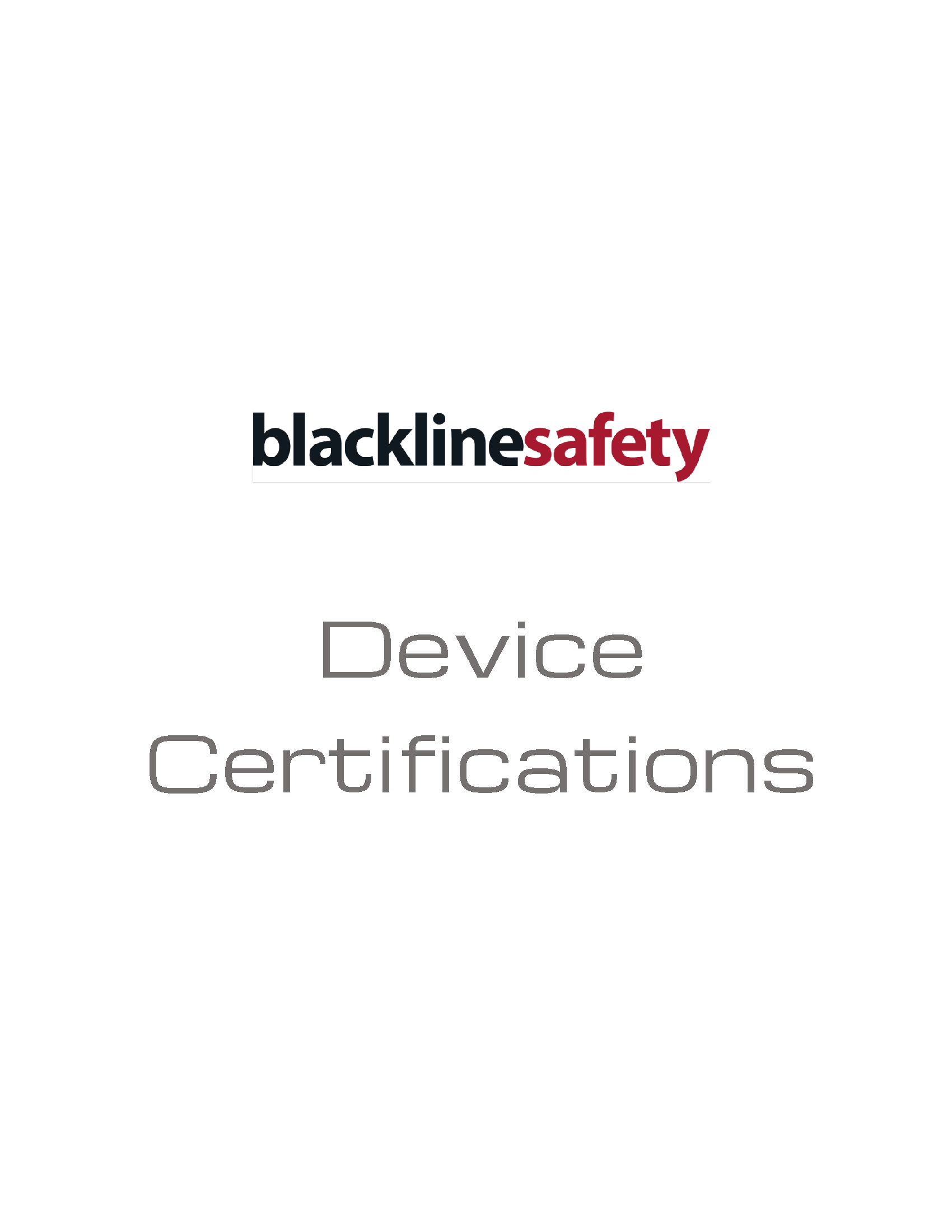

| G7c ATEX Certification | |
| G7c IECEx Certification | |
| G7c INMETRO (Hazardous location approval for Brazil) | |
| G7c PESO Certification |
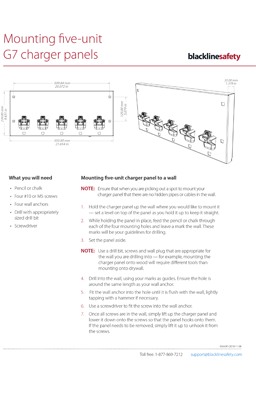

| Charger panel wall-mounting instructions |
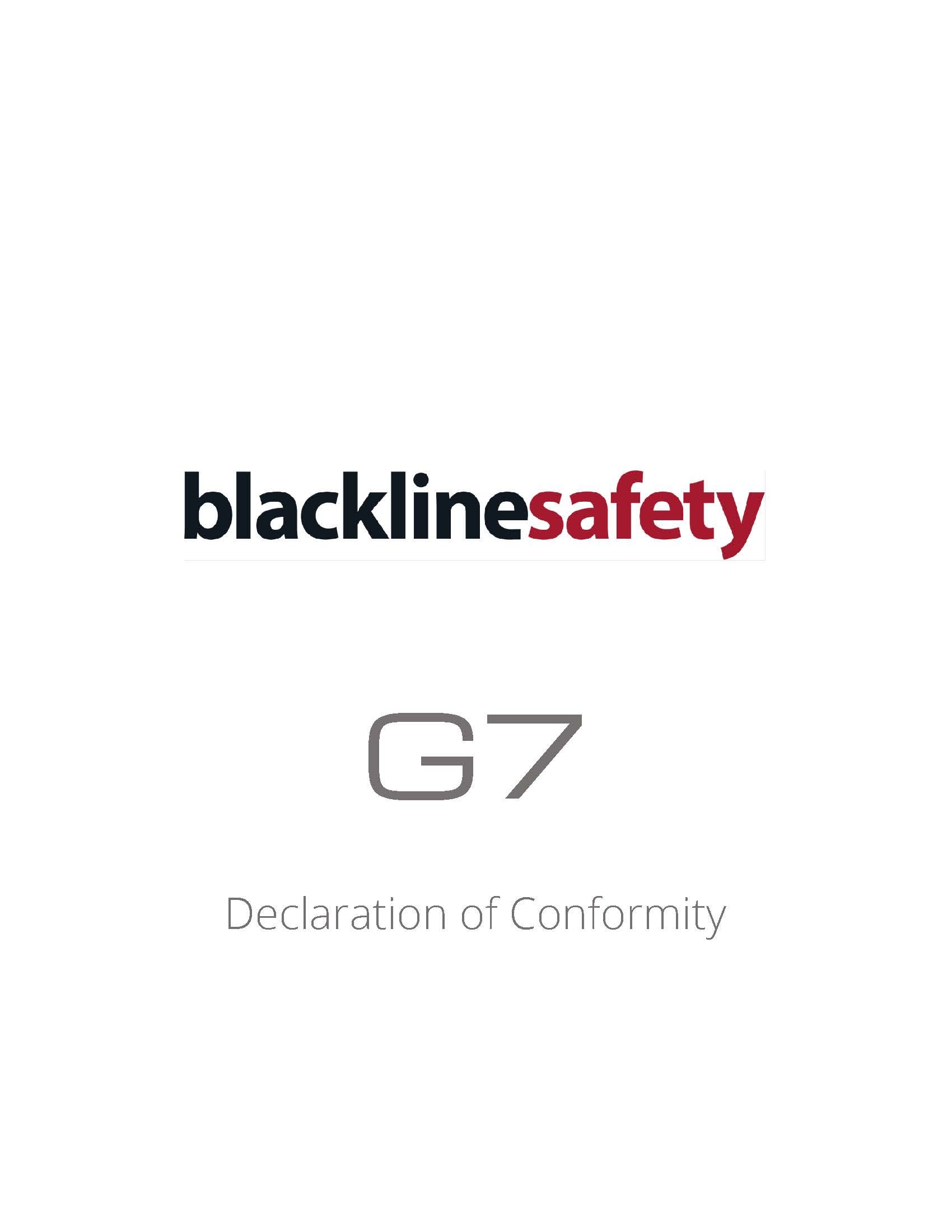

| G7c Declaration of Conformity - EU |
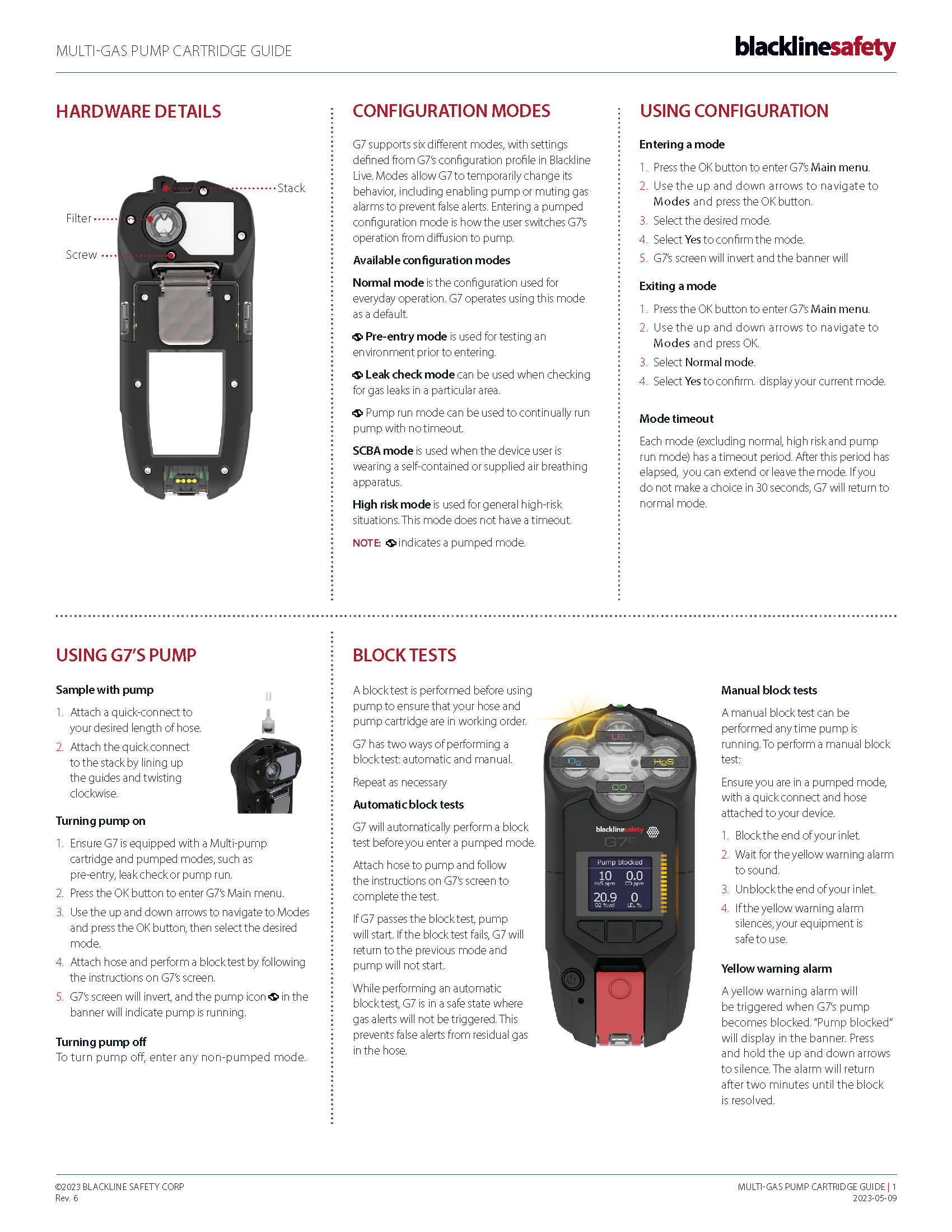

| G7 Multi-gas Pump Cartridge Guide_R6 - EN |
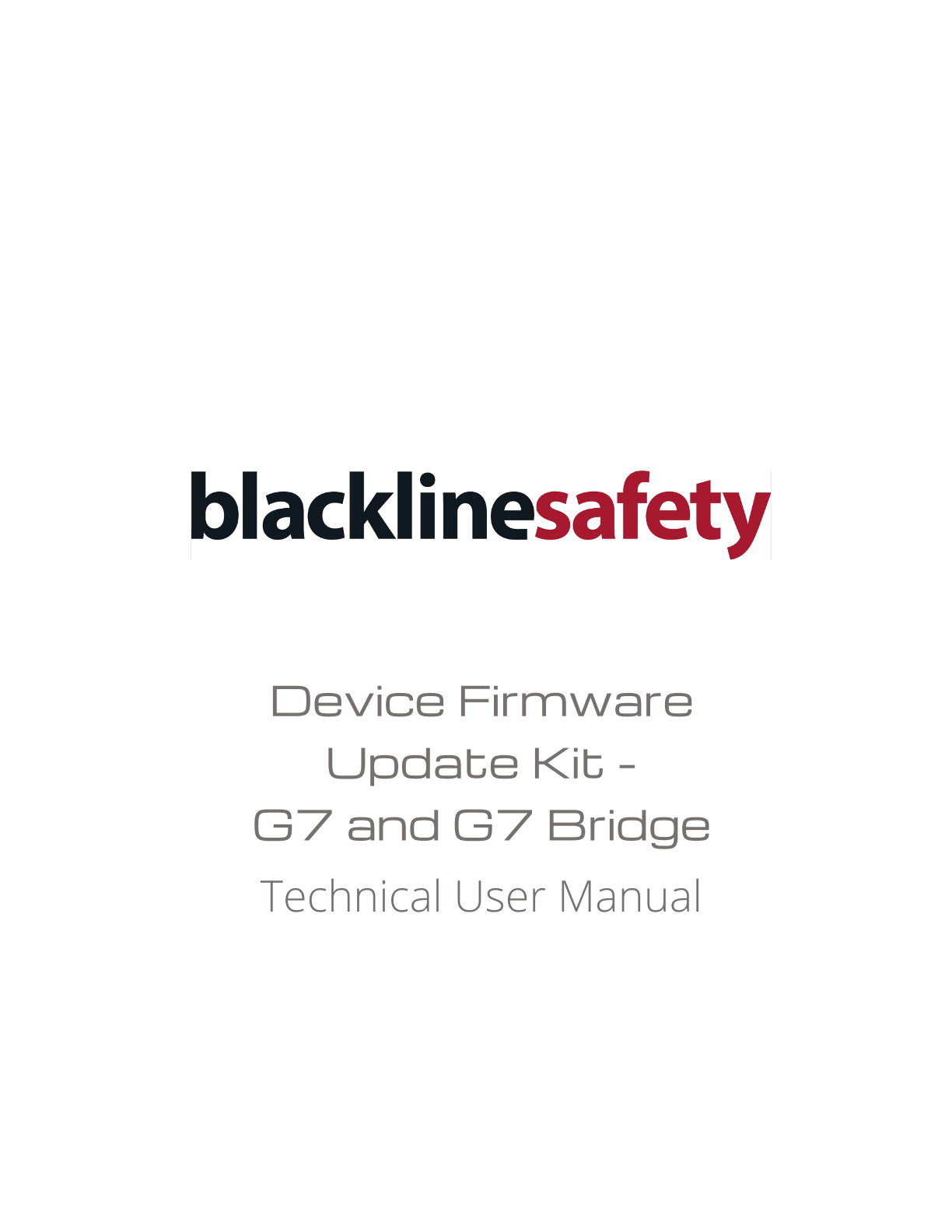

| Device Firmware Update Kit - EN |
